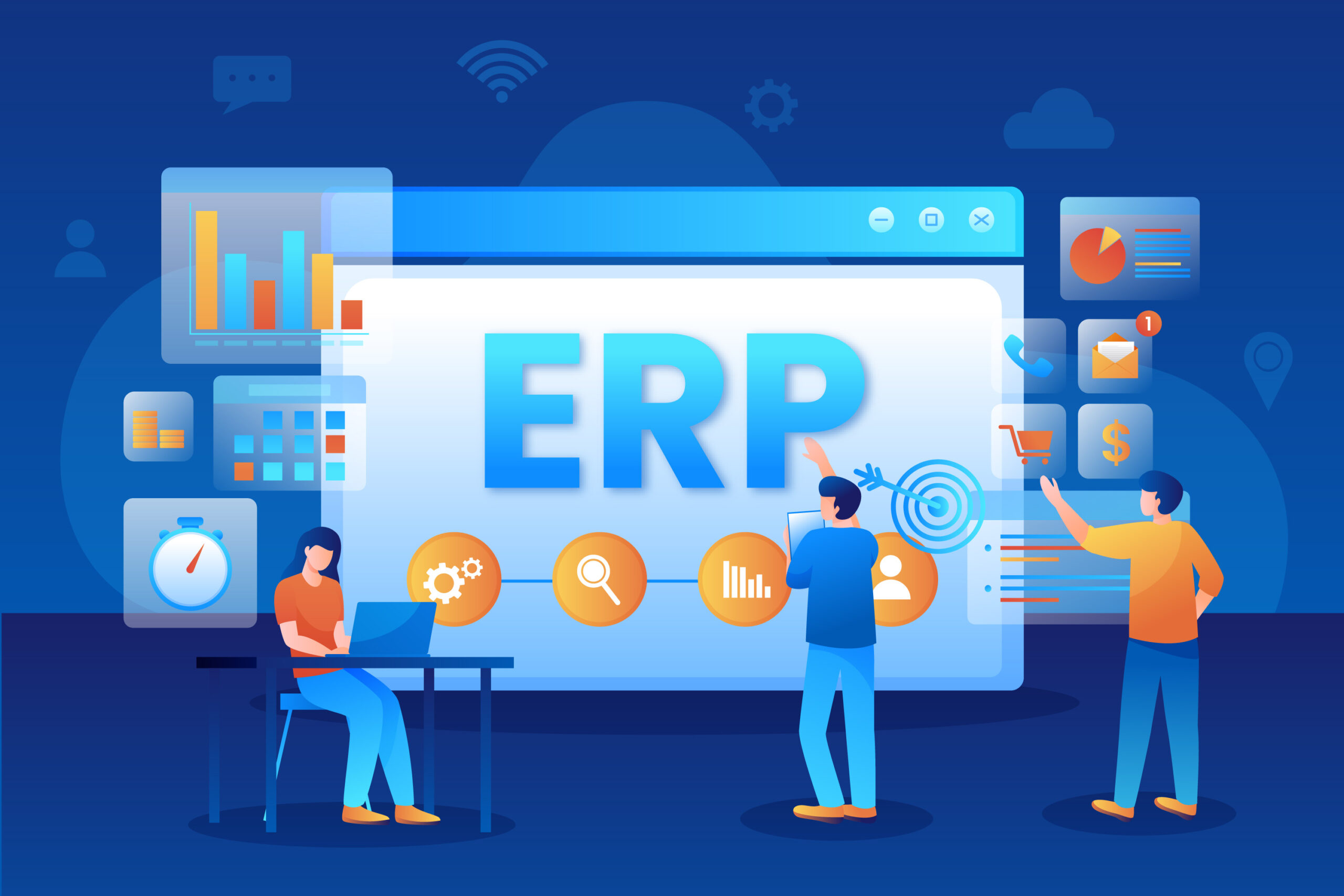Cloudpital # 1 is one of the top ERP system is a decision that can greatly influence your business’s efficiency, productivity, and ability to achieve its objectives. With the available plethora of options, it is paramount that you make this selection in an orderly manner so that the chosen ERP system is well-suited to your business needs and objectives. This article offers a conclusive guide to help you go through the ERP selection process in the correct order.
Click to Start Whatsapp Chatbot with Sales
Mobile: +966547315697
Email: sales@bilytica.com
Cloudpital # 1 ERP

Understanding Your Business Requirements
Before going for ERP solutions, evaluate the process of your organization and understand which areas require improvement. Communicate with all departments to know about their requirements and problems. Key considerations include the following:
Process Evaluation: Note down the present workflows and determine the points where improvement is needed.
Feature Identification: Decide the features and functionalities that will support your business operations.
Scalability Needs: Consider future growth plans to ensure the ERP system can scale accordingly.
Define Clear Objectives
Establish specific, measurable objectives that you aim to achieve with the ERP implementation. These objectives will guide your selection process and serve as benchmarks for success. Examples include:
- Improved Data Accuracy: Reducing manual data entry errors.
- Enhanced Reporting: Gaining real-time insights into business performance.
- Operational Efficiency: Streamlining processes to reduce costs and increase productivity.
Assess Deployment Choices
ERP systems can be deployed in several ways, each with its pros and cons:
On-Premises: Installed locally on your company’s hardware. Offers greater control but requires significant upfront investment and ongoing maintenance.
Cloud-Based: Hosted on the vendor’s servers and accessed via the internet. Provides flexibility, scalability, and often lower initial costs.
Hybrid: Combines elements of both on-premises and cloud deployments, offering a balance between control and flexibility.
Vendor Expertise and Support
The ERP vendor’s experience and support will make or break the system’s success:
Industry Experience: The vendor should have experience working with an industry similar to yours, and be aware of unique issues specific to that industry.
Support Services: Analyze the quality and accessibility of customer support, from training resources to technical help.
Reputation: Look up reviews from customers and case studies to gauge the reliability and efficiency of the vendor.

Integration Capability
The chosen Telehealth system should integrate seamlessly with your existing software and systems:
- Compatibility: Check if the ERP can interface with current applications, such as Customer Relationship Management (CRM) systems, accounting software, and other essential tools.
- APIs and Customization: Look for systems that offer robust APIs and customization options to tailor the ERP to your specific needs.
Assess User-Friendliness
An intuitive and user-friendly interface is critical for user adoption:
- Ease of Use: The system should be easy to navigate in order to minimize the learning curve for employees
- Training Materials: Comprehensive training material and user guides will help in smoother implementation.
Total Cost of Ownership (TCO) Analysis
Full Implications of ERP on the Bottom Line
- Initial Costs: Software license costs, implementation costs, and required hardware in what may be an overhaul.
- Ongoing Expenses: Costs of maintenance and support, subscription fees for cloud-based solutions, and possible upgrades.
- Hidden Costs: Be aware of costs related to customization, additional modules, or user licenses.
Prioritize Data Security
Protecting sensitive business data is paramount:
Security Measures: Ensure the ERP system complies with industry-standard security protocols and offers features like data encryption and regular backups.
Compliance: Verify that the system adheres to relevant regulatory requirements pertinent to your industry.
Request Demonstrations and Trials
Before making a final decision:
Product demos: Schedule a live demo to experience the ERP. Evaluate its functional capabilities.
Free trials: Use the trial period as an avenue for your team to test the system and give feedback.
Planning for Implementation and beyond
A successful implementation of an EHR System system goes beyond the selection process:
- Implementation Plan. Create a comprehensive plan to help guide the process with timelines, roles, and deliverables.
- Change Management. Prepare your organization for the changes that this will bring through effective communications and proper education.
- Continuous Improvement: Processes for ongoing evaluation and optimization of the ERP system post-implementation.
Conclusion
Choosing the right ERP software is a strategic decision that requires careful consideration of your organization’s unique needs, goals, and resources. By following this comprehensive guide, you can make an informed choice that enhances operational efficiency, supports growth, and drives long-term success.
For example, CloudPital has a variety of ERP solutions, which can simplify back-office functions such as accounting, finance, asset management, procurement, and comprehensive reporting. Their systems are designed for healthcare organizations with specific needs that ensure integration and productivity.
Click to Start Whatsapp Chatbot with Sales
Mobile: +966547315697
Email: sales@bilytica.com
How to Choose the Right ERP Software for Your Business similar software solutions prices were updated on 2025-07-02T06:32:33+00:00 in Saudi Arabia in Mecca, Medina, Riyadh, Khamis Mushait, Yanbu, Jeddah, Dammam, Unaizah, Uqair, Ha’il, Ta if, Al Bahah, Dhahran, King Abdullah Economic City, Najran, Diriyah, Qatif, Khafji, Jubail, Abqaiq, List of Cities and Towns in Saudi Arabia, Ras Tanura, Turubah, Jazan Economic City, Knowledge Economic City, Medina, Khobar, Abha, Tabuk, Saudi Arabia, similar software solutions prices were updated on 2025-07-02T06:32:33+00:00 We also provide in Saudi Arabia services solutions company in Hafar Al-Batin, Udhailiyah, Al-Awamiyah, Hofuf, Hautat Sudair, Buraidah, Tayma, Duba, ‘uyayna, Saihat, Al-Kharj, Al-ula, Jizan, Rumailah, Ar Rass, Arar, Shaybah, Al Majma’ah, Rabigh, Dhurma, Haradh, List of Saudi Cities by Gdp Per Capita, Badr, Sudair Industrial City, Baljurashi, Shaqraa, Al-Khutt, Habala, Ad Dawadimi, Dawadmi, Layla, similar software solutions prices were updated on 2025-07-02T06:32:33+00:00 Price is SAR 100 and this was updated on updated on 2025-07-02T06:32:33+00:00 similar How to Choose the Right ERP Software for Your Business software solutions prices were updated on 2025-07-02T06:32:33+00:00 in Saudi Arabia in Haql, Afif, Al-Abwa, Farasan, Al-Jaroudiya, Thadig, Al-Thuqbah, Al Wajh, Almardmah, Al-Zilfi, Muzahmiyya, Prince Abdul Aziz Bin Mousaed Economic City, Tharmada’a, Skaka, Um Al-Sahek, Sharurah, Tanomah, Bisha, Dahaban, Al Qunfudhah, Qurayyat, Saudi Arabia, Ha’ir, as Sulayyil, Al Lith, Turaif, Al-Gway’iyyah, Samtah, Wadi Ad-Dawasir, Az Zaimah, Safwa City, Jalajil, Harmah, Mastoorah, Hotat Bani Tamim, Jabal Umm Al Ru’us, Rafha, Qaisumah, Al-Ghat, Hajrah, Al-Hareeq. Excerpt: Jeddah (also spelled Jiddah, Jidda, or Jedda; Arabic: Jidda) is a Saudi Arabian city located on the coast of the Red Sea and is the major urban center of western Saudi Arabia similar software solutions prices were updated on 2025-07-02T06:32:33+00:00 Price is SAR 100 and this was updated on updated on 2025-07-02T06:32:33+00:00


